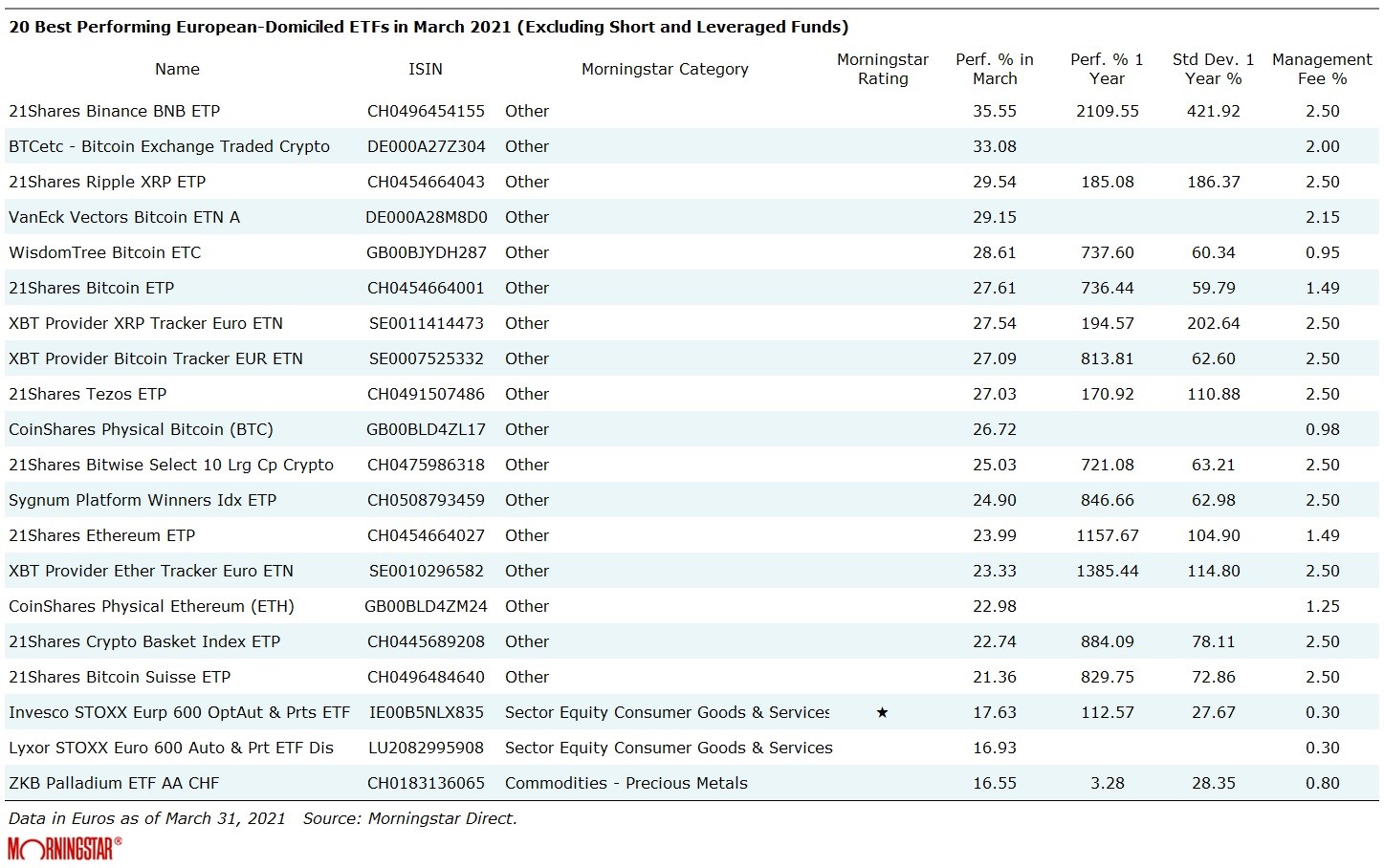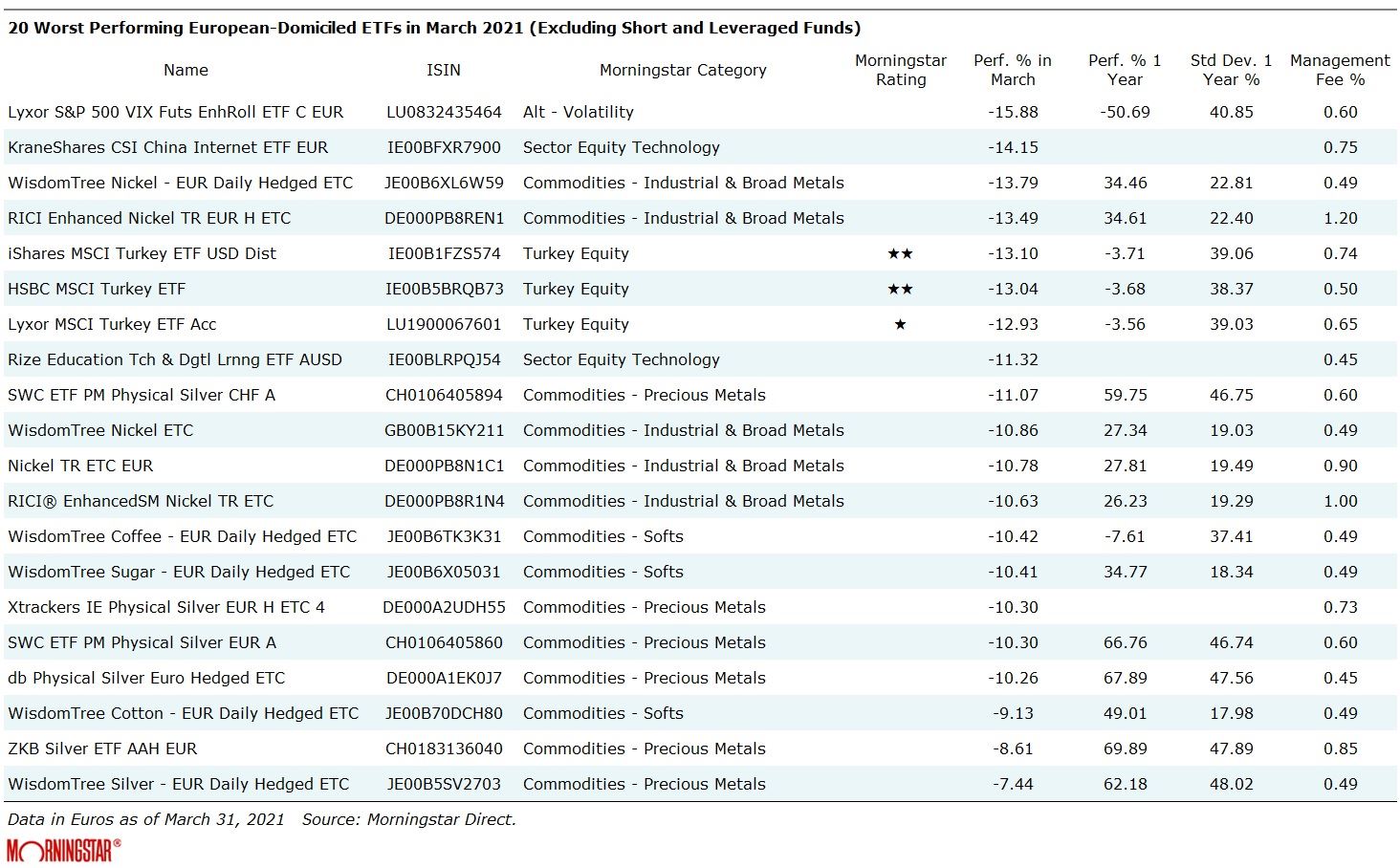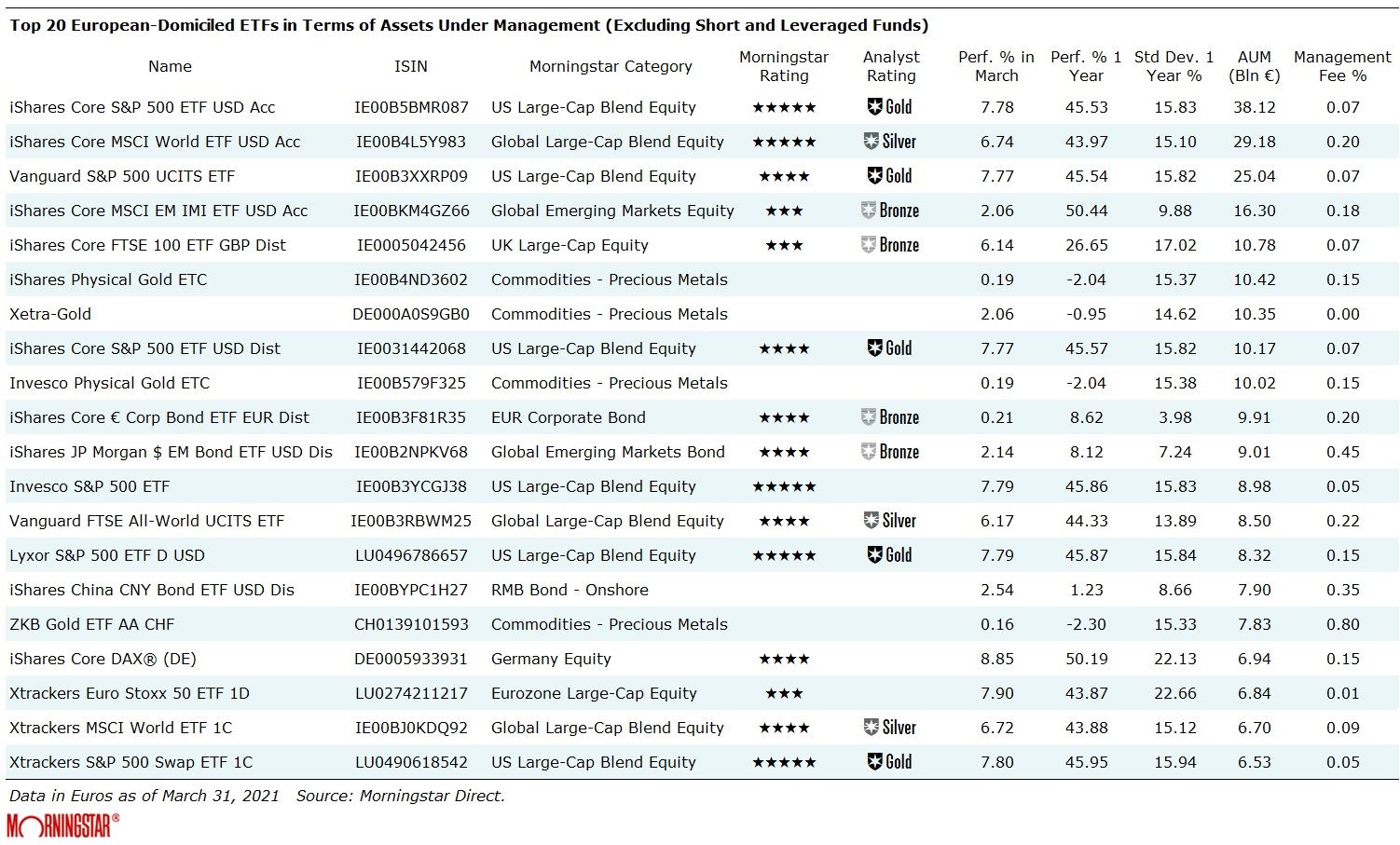
According to Morningstar data, there are about 50 percentage points between the best and worst performing exchange-traded products (ETPs) in March, with returns for the month ranging from 35% to -16%.
We have looked at the key trends in the third month of the year, excluding inverse and leveraged funds. These instruments, being purely passive products, reflect the evolution of the markets without the bias (good or bad) of an active manager.
The Leaders
Cryptocurrencies have been on the rise for years, but the past several months have been the most exciting for cryptos enthusiasts. On March 14, Bitcoin hit a new record high of above $60,000.
Its price surged after Tesla, led by Elon Musk, confirmed on February 8 that it purchased about $1.5 billion in Bitcoin and expects to start accepting it as a payment in the future.
Having said that, at the top of the best performing ETFs in March there is the 21Shares Binance BNB ETP (ABNB) showing a total return of 35% last month. Over the past year, Binance gained an outstanding 2,109%, surging from $12 to $255 at the end of March. It was also the best performer in February.
Among the cryptos in the top performers table there are two trackers (SC0P and DFOA) of the STOXX Europe 600 Optimised Automobiles & Parts Index, which provides equity exposure to European-domiciled auto manufacturers and parts makers.
If we look under the bonnet of the STOXX Europe 600 Optimised Automobiles & Parts index, the top three components – Daimler, Volkswagen, and Stellantis – dominate the portfolio, representing 55% of its total value. Despite being comprised of European companies, the index tends to be driven by global market dynamics since the largest constituents conduct business worldwide. The automotive sector was one of the most affected by the Covid-19 pandemic, but generally speaking the industry and major auto parts manufacturers are expected to recover some lost ground in 2021-2022.
The surge in palladium’s price is also linked to the automotive industry. The metal is used in catalytic converters to reduce harmful emissions, and tightening environmental regulation is forcing auto makers to put more into each vehicle.

The Laggards
Turning to the laggards, the worst performing ETP in Europe last month was Lyxor S&P 500 VIX Futures Enhanced Roll UCITS ETF, which shed 16%. This tracks the S&P 500 VIX Futures Enhanced Roll Index, a benchmark that offers exposure to the expected implied volatility of the S&P 500. Also known as the “fear gauge”, this index is often seen as a reflection of perception of risk.
In second position we find the KraneShares CSI China Internet ETF EUR (KWBE), whose goal is to deliver the performance of China-based traded companies whose main business are in the Internet and Internet-related sectors.
Turkey equity ETFs also had a negative month. The Istanbul Stock Exchange and the Turkish lira fell dramatically after President Erdogan fired on March 20 the country’s central bank chief, the third to be axed in two years. These moves added a further layer of uncertainty about the economic future of the country and sent shockwaves through the emerging market investor community.
Finally, silver dropped in March amid a stronger US dollar, lower crude oil prices and rising bond yields.

The Biggest
Monthly top and flop performers often coincide with very volatile and therefore risky products, which should play a satellite role in your portfolio. Below you have an overview of the biggest European-domiciled ETPs in terms of assets, which could be more appropriate to consider among core holdings. Monthly performances go from 8.8% of iShares Core DAX® UCITS ETF (EXSF) down to ZKB Gold ETF (ZGLD), which gained 0.16% in the month.






























